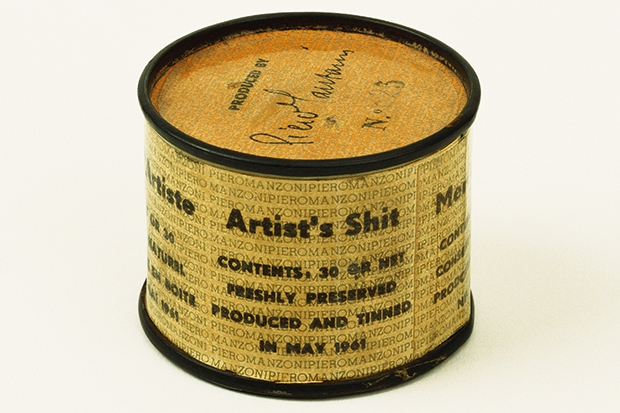At the tail end of last year, an artist called Peter Goodfellow mounted an exhibition of paintings titled Treason of the Scholars. The works were a garish parody of the signature styles of blue-chip artists including Jeff Koons, Damien Hirst and Joseph Beuys — not so much satire as aggravated assault. In terms of nuance, it made the giant inflatable butt plug artist Paul McCarthy had installed in Paris’s Place Vendôme in 2014 look subtle. But that, Goodfellow stressed, was precisely the point.
His complaint, he wrote in an accompanying essay, was that the ‘charlatans’ of the contemporary art establishment had come to neglect his medium in favour of figures possessed of ‘no ability, no technique, no intellectual gravity’. Conceptual art and everything associated with it was, apparently, ‘unadulterated hubris and self-indulgence’.
In many ways, Goodfellow’s is a persuasive argument. Indeed, I’d hazard a guess that even the most hoarse cheerleader for conceptual art might read his essay and, albeit secretly, acknowledge a flicker of truth. From Private Eye’s ‘Young British Artists’ cartoon strip to the rococo cadences of David Starkey’s broadsides against the form, conceptual art has proved an irresistible target.
Because there is often — but by no means always — no demonstrable application of skill in works of conceptual art, it is labelled as pretentious, po-faced and devoid of the visual éclat that is surely the entry-level qualification for great art. It is, in other words, excrement packaged up and marketed at a premium to gormless curators and collectors.
Yet on all the counts I have listed above, the basic intellectual reasoning against conceptual art is bunk. On the eve of Tate Britain’s new exhibition celebrating the British conceptual artists of the 1960s and 1970s, now seems as good a time as any to explain why.









Comments
Join the debate for just £1 a month
Be part of the conversation with other Spectator readers by getting your first three months for £3.
UNLOCK ACCESS Just £1 a monthAlready a subscriber? Log in